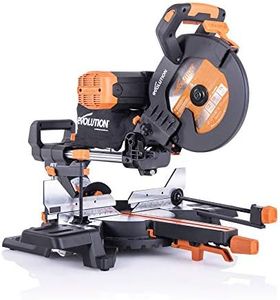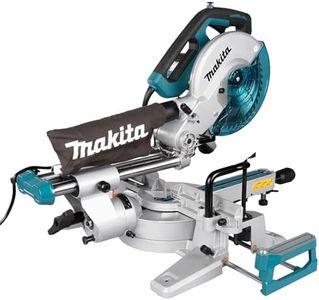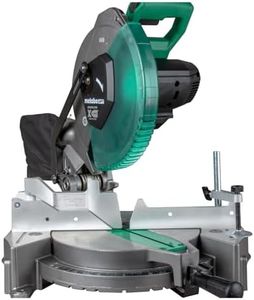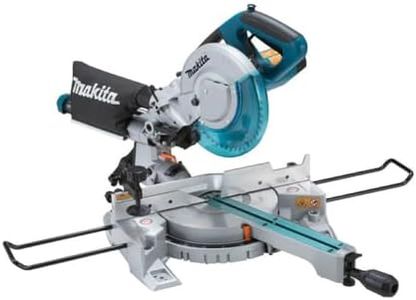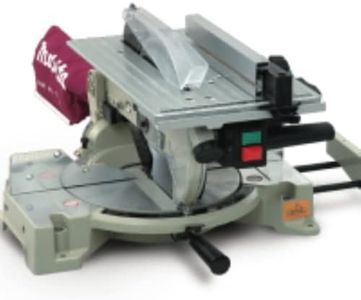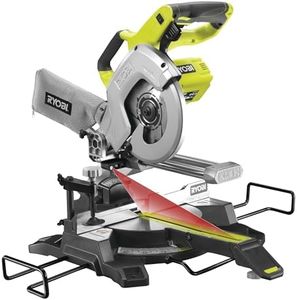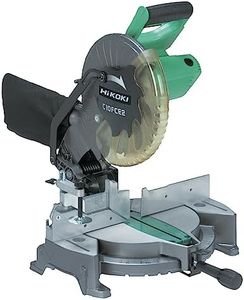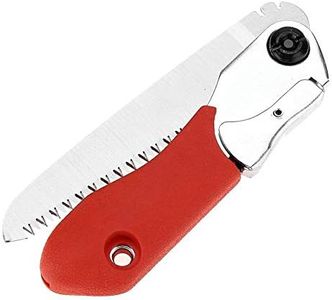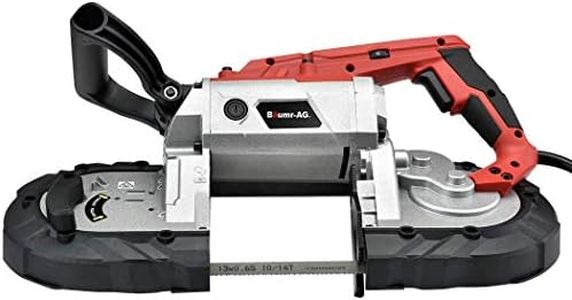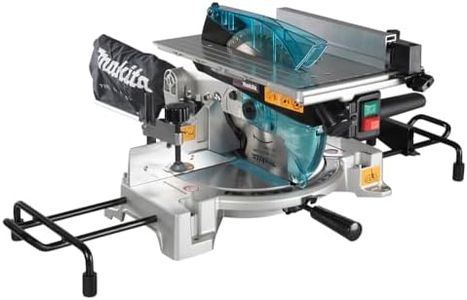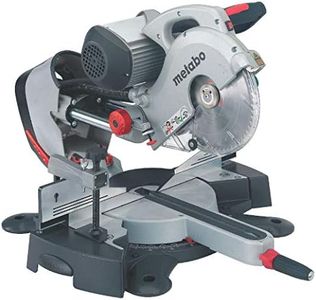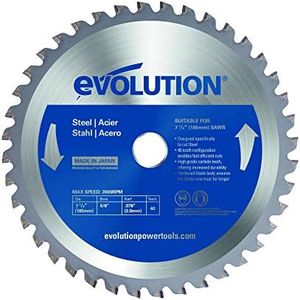We Use CookiesWe use cookies to enhance the security, performance,
functionality and for analytical and promotional activities. By continuing to browse this site you
are agreeing to our privacy policy
10 Best Chop Saws
From leading brands and best sellers available on the web.By clicking on a link to a third party's website, log data is shared with that third party.
Buying Guide for the Best Chop Saws
Choosing the right chop saw can make a big difference in your woodworking, metalworking, or general construction projects. It's important to look beyond just the price or looks and consider which features and specifications match your specific needs. Think about the types of materials you'll be cutting, how often you'll use the tool, and whether you need portability or prioritize power. By understanding the most important aspects of chop saws, you can make a more confident and informed decision.Blade SizeBlade size refers to the diameter of the circular blade used by the chop saw. Larger blades (typically 14 inches or more) can handle bigger and thicker materials, making them suited for tasks like cutting metal pipes or large wooden boards. Smaller blades (such as 10 or 12 inches) are usually lighter and more portable, better if you work with smaller materials or need to move the saw often. To pick the right size for you, consider the largest material you expect to cut regularly—choose a blade size that can handle it comfortably.
Motor PowerMotor power is usually measured in amps for corded saws or volts for cordless options. Higher power means the saw can cut through tougher materials more easily and handle longer work sessions without slowing down. Lighter-duty saws have lower power and are suitable for occasional use or lighter materials like softwood or thin metal. If you plan to cut hard materials like steel or hardwoods frequently, go for higher power. For light, occasional work, mid-range power may be sufficient.
Cutting CapacityCutting capacity tells you the maximum size and thickness of material the saw can cut in a single pass. This is affected by both the blade size and the design of the saw. If you often need to cut wide or thick pieces—such as large boards, beams, or metal stock—look for a saw with a larger cutting capacity. If your projects involve smaller or thinner pieces, most standard capacities will be adequate.
Type of BladeChop saws can use different types of blades depending on whether you're cutting wood, metal, or other materials. Abrasive blades are often used for metal, while toothed blades are better for wood. Choose a chop saw that can accept the blade type for your most common task. If you plan to switch between materials, make sure you can easily change blades and that appropriate blades are available for the saw you choose.
Fence and Clamping SystemThe fence helps hold your material steady and supports accurate cuts, while the clamping system keeps your workpiece securely in place. A sturdy, adjustable fence and reliable clamp are important for both precision and safety, especially when dealing with hard or heavy materials. If you often cut large, unwieldy pieces, choose a saw with a strong, easy-to-adjust fence and a robust clamping mechanism.
PortabilityPortability refers to how easy it is to move and store the chop saw. Some saws are heavier and mounted to stands or benches, while others are more compact and light enough to carry to different job sites. If you'll need to transport your saw often, focus on models with handles and lower weight. If your saw will stay in a workshop, portability is less important, and you might prefer a heavier, more stable unit.
Mitre and Bevel CapabilitiesA basic chop saw only cuts at 90-degree angles, but some models offer mitre or bevel adjustments for making angled cuts. If you need to cut at angles (for example, picture framing, trim work, or pipe fitting), look for a saw with these features. If all your cuts will be straight, a saw without adjustable angles can be simpler and sturdier.
